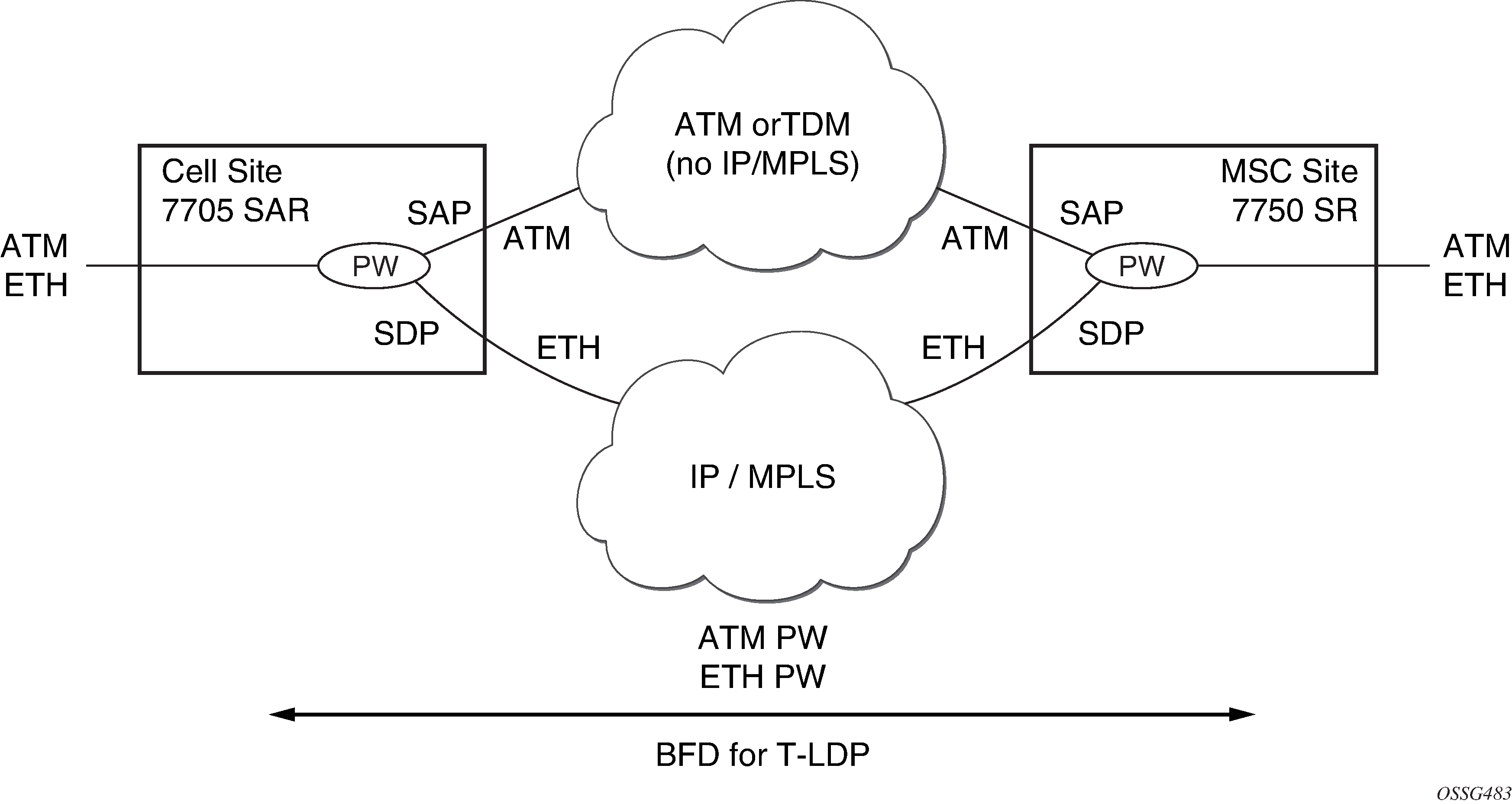For many Universal Mobile Telecommunications System (UMTS) networks planning to deploy High-Speed Downlink Packet Access (HSDPA), the existing mobile backhaul topology consists of a cell site that is partially backhauled over DSL (for the HSDPA portion) and partially over an existing TDM/ATM infrastructure (for UMTS voice traffic).

For example, the service pseudowires provider may use a 7705 SAR with one or two ATM E1 uplinks for real-time voice traffic and an Ethernet uplink connected to a DSL model for NRT data traffic. At the RNC site, a 7750 SR service router can be used, connected by ASAP (E1 IMA bundles) or STM-n ATM to the TDM/ATM network, and Ethernet to the DSL backhaul network.
On the MSC-located SR connected to the Radio Network Controller (RNC), there is a standard pseudowire (Ethernet or ATM) that has an active pseudowire by IP/MPLS, but the standby path is not IP/MPLS capable Therefore, the active/standby pseudowire concept is extended to allow standby to be an access SAP to an ATM network for ATM pseudowire or Ethernet (bridged over ATM) for ETH pseudowire.
Normally, if the MPLS pseudowire path is active, this path is used. If a failure happens on the IP/MPLS path, detected through BFD-TLDP or local notification, traffic needs to switch to the SAP that is connected to the ATM/TDM backhaul network. As soon as the MPLS pseudowire path becomes available again, reversion back to the pseudowire path is supported.